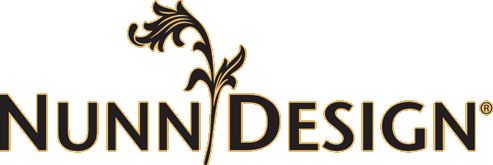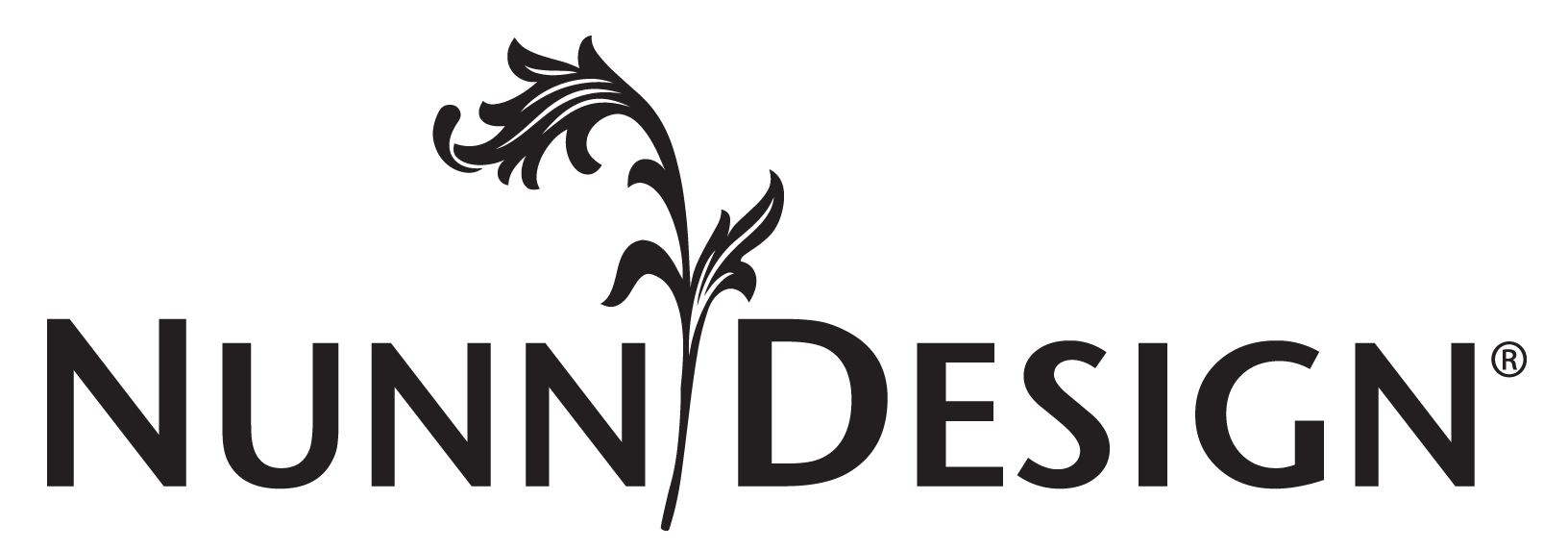Inside Nunn Design, Tutorials
Steps to Designing an Indoor Trade Show or Craft Fair Booth – Part 1

Designing an indoor trade show or craft fair booth can be overwhelming!
Making a list of all of the decisions that I needed to make and the design solutions that I needed to solve, helped me to move forward with such a big task.
Here are the 7 steps for designing an indoor trade show, or craft fair booth, we will be covering in this 4 part blog series:
Step 1: Trade Show Booth Side Walls
Step 2: Signage
Step 3: Lighting
Step 4: Tables
Step 5: Displays
Step 6: Floor
Step 7: Shipping
In Part 1, of this 4 Part blog post series, we will cover the first two steps – designing and creating the booth’s sidewalls and signage.
Here are links to the other parts in this series:
- PART 2: Steps to Designing an Indoor Trade Show or Craft Fair Booth
- PART 3: Steps to Designing an Indoor Trade Show or Craft Fair Booth
- PART 4: Steps to Designing an Indoor Trade Show or Craft Fair Booth
1. Trade Show Booth Side Walls.
For the trade show booth walls, I knew that I had a limited amount of design solutions to decide from. Those options were:
Option a: Hard Framed Walls:
I have always been attracted to trade show booths with hard walls for their backdrops, but the practical side of me (aka: cheap bastard!) knew I had some limitations due to shipping, standard box sizes and the ability to construct hard walls within union restrictions. After looking at many images of trade show booths on Pinterest, I became clear on what it was I liked so much about hard walls. I determined that I liked:
• Clean lines
• A dark backdrop that set a mood and tone
• A modern industrial look that was warm and “hip”
It wasn’t until after I watched many You Tube videos on the making of the hard walls did I truly let go of moving in that direction. Way too much work!! If you are interested in exploring the hard framed wall approach, here is a great series of videos showing the steps:
Video 1: How to make a trade show booth time-lapse video 1
Video 2: How to make a trade show booth time-lapse video 2
Video 3: How to make a trade show booth time-lapse video 3
Video 4: How to make a trade show booth time-lapse video 4
Video 5: How to make a trade show booth time-lapse video 5
Video 6: How to make a trade show booth time-lapse video 6
Option b: Fabric Walls:
Once I was clear on what it was I was wanting to create, (clean lines, a dark backdrop that set a mood and a modern industrial look that was warm and “hip”), I started to think of alternative ways I could build out a booth – other than using hard walls for the trade show booth design. When I saw these images on Pinterest from Anthropology, I had one of those “ahhhhh-that is it!” moments!



Repurposing Previous Trade Show Items
After speaking to Kathryn and Christee in the warehouse, we determined we could repurpose our previous trade show booth muslin fabric curtains, and table covers, by pulling out the grommets, removing the hems, dyeing the fabric and sewing the panels together into large backdrop fabric curtains.
Here is an image of our previous trade show booth design. (You can see more images of the previous design in this blog post: 12 Tips For Setting up a Trade Show Booth.)

For most standard trade shows, the booth contract typically consists of supplying pipe and drapes. The pipes and drapes are installed to separate your booth from your side and back wall neighboring booths. In order to create a hard fabric backdrop you will need to have a separate pipe and drape set-up just for your booth. For the To Bead True Blue Show in Tucson, the pipe and drapes were not part of our contract. We had a corner booth with two “walls”, so the pipes cost us $50.00 to rent.
Dye Fabric
Kathryn was in charge of the dyeing and sewing of the fabric walls. After pulling out all of the grommets and seams (we used hooks to hang our curtains with our previous booth), she dyed all the fabric with Rit Fabric Dye-Charcoal Gray.

Prepare Fabric for Pipe Frame
Next, Kathryn sewed the dyed muslin panels of fabric together and created a top and bottom seam large enough for us to slide the pipe pole through. To create really crisp edges on the sides of the fabric, Kathryn used Fabric Fuse Tape.

To create a really tight and taut fabric surface, that wouldn’t move, I needed a way to attach the bottom of the fabric to the pipe frame. I purchased two 8’ wooden dowels at my local hardware store and cut them both in half (so they’d fit into the shipping boxes) and drilled the ends. The booth was a 10’ x 10’ and my dowels were only 8’ so I used leather cord (because I had it!!) to connect the wooden dowels together in the middle. I then threaded the wooden dowel through the bottom seam of the curtain panel. On both ends of the drilled wooden dowels I thread through leather cord and tied the cord to the base of the pipe drape pole.

For packing and shipping the fabric sidewalls, Kathryn rolled the fabric panels to avoid a lot of wrinkles and creases. This made my job of steaming the curtains so much easier during set-up!
Here is what set-up day looked like for installing the fabric wall curtains:

Boy, the booth starts out looking like a real garage sale!!

Me, standing on the table to thread through the top pipe pole. I wouldn’t recommend standing on tables! Maybe a small step stool would work for most, but I’m under 5’, so table it is!



What to Buy!
- Fabric
- Ritz Fabric Dye-Charcoal Gray (we used 6 bottles!)
- Fabric Fuse Tape
- Two 8’ Wooden Dowels (local hardware store)
- Fabric Steamer
2. Signage
For the back wall of the booth I wanted to have a series of photographs that would easily communicate “what we do.” I selected 4 images from our 2018 Master Catalogue and used frames I purchased years ago from Creative Co-op. They originally had glass in them, but we removed the glass to avoid the glare from the lights (actually, truth be told, the glass broke years ago so we removed it!).
The images for the signage were printed by my fabulous photographer David Conklin. Christee mounted the images onto foam core using Spray Mount and then inserted them into the wooden distressed frames. On the backside of the picture frames my husband Brett attached wire so I could easily adjust the length if needed.
Once I was ready to hang the picture frames, I laid them out on the table so I could see the order in which I wanted them. I was also able to figure out where my center point would be on the wall.

Brett made me these wire hooks to make it easy for me to hang the pictures from the upper pipe drape pole.


Here is how they look hanging up!





What to Buy!
- Wooden Frames
- Quality Prints-David Conklin Photography
- Foam Core
- Spray Mount
- Heavy Gauge Wire
Part 1 Down, 3 Parts To Go!
Part 1, sharing 2 steps, down! See the other blog posts for more steps to designing an indoor trade show or craft fair booth.
- PART 2: Steps to Designing an Indoor Trade Show or Craft Fair Booth
- PART 3: Steps to Designing an Indoor Trade Show or Craft Fair Booth
- PART 4: Steps to Designing an Indoor Trade Show or Craft Fair Booth
Shop Nunn Design Wholesale
Nunn Design has been supplying jewelry artists with findings for over 20 years. Shop wholesale jewelry findings for creative jewelry makers.
Shop Nunn Design!How to Purchase Wholesale?
If you are interested in becoming one of the many designers who trust their jewelry to Nunn Design Findings, please join us by registering to become one of our wholesale customers!
Please visit our Where to Buy Page for a listing of online stores that sell Nunn Design Findings retail.
If you enjoyed reading this post, please subscribe to our blog. Here are 10 Reasons Why to Subscribe and a place to do so!







I can’t begin to tell you how useful this post is-and not just for show displays! I saw your earlier muslin booth at CHA some years ago, which was beautiful-especially your dowels and tin trays. This treatment really reflects the quality of your jewelry, too, and shows off the same mood of your catalog. So impressive!
Thank you for commenting!
Excellent! Thank you for sharing this incredible information! Is it possible to see the back of the wooden frame where the wire hangs.
I emailed you some photos Joan.
We used screw eyes in the back and just twisted on some steel wire.
Becky, Thank you for posting these instructions. I so admired your booth at the Tucson show. (I was across from you.) I will use these instructions for sure!
Hi Becky! I love the vibe of your booth and I’m using it as inspiration for my own set up (I sell finished jewelry). Would you mind telling me how tall your pipe frame is? I’m guessing 6.5 to 7 feet based on what you said about your height and the fact that you’re on a table in these pics (that is so like me! lol) Thank you so much for sharing your process!
I’m mocking mine up now…. no idea what I’m doing so this is super useful ….
wish me luck, dale